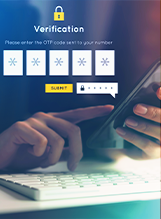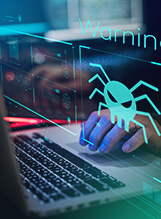
We live in an age where personal information is a valuable commodity. Unfortunately, fraudsters are constantly devising new methods to acquire sensitive data. As individuals and organizations, we must stay vigilant to protect ourselves. Let’s explore some common tactics used by fraudsters and how to safeguard against them.
Summary
Phishing Attacks

What is it?
Phishing is like a deceptive fishing expedition. Fraudsters send seemingly legitimate emails or messages, often impersonating trusted entities (like banks or government agencies). These messages contain malicious links or attachments that, when clicked, lead to fake websites or install malware on your device.
How to Protect Yourself:
Verify the Sender: Always double-check the sender’s email address. Legitimate organizations won’t ask for sensitive information via email.
Hover Over Links: Hover your mouse over links to reveal the actual URL. Be cautious if it looks suspicious.
Educate Yourself: Learn to recognize phishing signs and educate your team about them.
Credential Stuffing

What is it?
Credential stuffing is a brute-force attack. Fraudsters use stolen username-password pairs (often from previous data breaches) to gain unauthorized access to other accounts. They hope users reuse passwords across platforms.
How to Protect Yourself:
Unique Passwords: Use different passwords for each account.
Enable Multi-Factor Authentication (MFA): MFA adds an extra layer of security.
SIM Swapping
What is it?
SIM swapping occurs when a fraudster tricks a person into transferring their phone number to a SIM card they control. This allows the fraudster to receive any calls, texts, or 2-factor authentication codes intended for your phone, giving them access to your accounts and personal information.
How to Protect Yourself:
Contact Your Carrier: Set up additional security measures with your mobile carrier.
Avoid Publicly Sharing Personal Information: Be cautious about sharing personal details online.

Malware and Keyloggers

What is it?
Malware (malicious software) infiltrates your device, while keyloggers record every keystroke you make. Both can capture sensitive information without your knowledge.
How to Protect Yourself:
Install Antivirus Software: Regularly update and run antivirus scans.
Be Wary of Downloads: Only download files from trusted sources.
Use Virtual Keyboards: When entering sensitive data, use virtual keyboards to avoid keyloggers.
Dumpster Diving and Physical Theft
What is it?
Sometimes old-school methods work. Fraudsters rummage through trash or steal physical documents (like credit card statements) to obtain personal information.
How to Protect Yourself:
Shred Documents: Dispose of sensitive papers properly.
Secure Your Wallet and Devices: Keep them safe from physical theft.

Fraudsters are persistent, but so should our vigilance. By staying informed, educating ourselves, and implementing security best practices, we can thwart their efforts. Remember, safeguarding personal information is everyone’s responsibility. Let’s keep our digital lives secure!







Social Engineering
What is it?
Social engineering relies on manipulating human psychology. Fraudsters exploit trust, fear, or urgency to extract information. They might impersonate colleagues, tech support, or even friends to gain access to your data.
How to Protect Yourself:
Be Skeptical: Don’t readily share personal information, even if someone claims to be from a reputable organization.
Verify Requests: If someone asks for sensitive data, independently verify their identity through official channels.